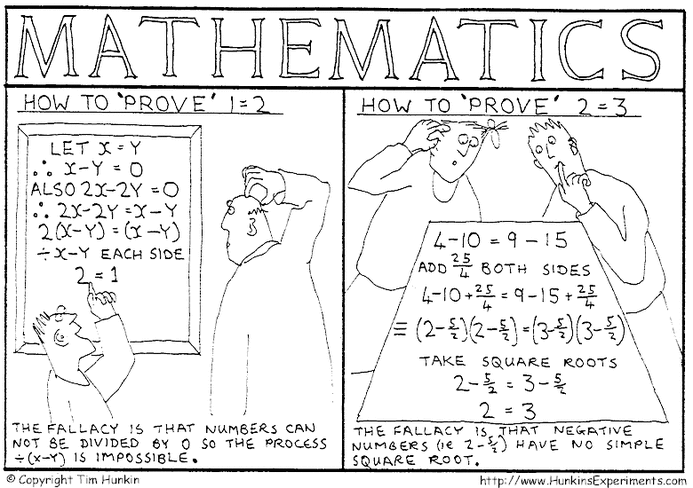Interesting Facts Of Science
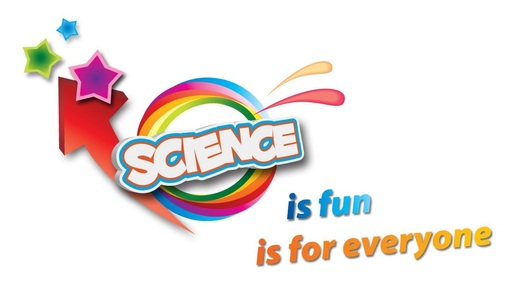
Did you know that there are 206 bones in the adult human body and there are 300 in children (as they grow some of the bones fuse together).Flea's can jump 130 times higher than their own height. In human terms this is equal to a 6ft. person jumping 780 ft. into the air.The most dangerous animal in the world is the common housefly. Because of their habits of visiting animal waste, they transmit more diseases than any other animal.Snakes are true carnivorous because they eat nothing but other animals. They do not eat any type of plant material.The world's largest amphibian is the giant salamander. It can grow up to 5 ft. in length.100 years ago: The first virus was found in both plants and animals.90 years ago: The Grand Canyon became a national monument & Cellophane is invented.80 years ago: The food mixer and the domestic refrigerator were invented.70 years ago: The teletype and PVC (polyvinyl-chloride) were invented.60 years ago: Otto Hahn discovered nuclear fission by splitting uranium, Teflon was invented.50 years ago: Velcro was invented.40 years ago: An all-female population of lizards was discovered in Armenia.30 years ago: The computer mouse was invented.20 years ago: First test-tube baby born in England, Pluto’s moon, Charon, discovered.10 years ago: First patent for a genetically-engineered mouse was issued to Harvard Medical School.5 years ago: The first successful cloning of human embryoThe smallest bone in the human body is the stapes or stirrup bone located in the middle ear. It is approximately .11 inches (.28 cm) long.The longest cells in the human body are the motor neurons. They can be up to 4.5 feet (1.37 meters) long and run from the lower spinal cord to the big toe.There are no poisonous snakes in Maine.The blue whale can produce sounds up to 188 decibels. This is the loudest sound produced by a living animal and has been detected as far away as 530 miles.The largest man-made lake in the U.S. is Lake Mead, created by Hoover Dam.The poison arrow frogs of South and Central America are the most poisonous animals in the world.A new born blue whale measures 20-26 feet (6.0 - 7.9 meters) long and weighs up to 6,614 pounds (3003 kg).The first coast-to-coast telephone line was established in 1914.The Virginia opossum has a gestation period of only 12-13 days.The Stegosaurus dinosaur measured up to 30 feet (9.1 meters) long but had a brain the size of a walnut.The largest meteorite crater in the world is in Winslow, Arizona. It is 4,150 feet across and 150 feet deep.The human eye blinks an average of 4,200,000 times a year.Skylab, the first American space station, fell to the earth in thousands of pieces in 1979. Thankfully most over the ocean. It takes approximately 12 hours for food to entirely digest.Human jaw muscles can generate a force of 200 pounds (90.8 kilograms) on the molars.The Skylab astronauts grew 1.5 - 2.25 inches (3.8 - 5.7 centimeters) due to spinal lengthening and straightening as a result of zero gravity.An inch (2.5 centimeters) of rain water is equivalent to 15 inches (38.1 centimeters) of dry, powdery snow.Tremendous erosion at the base of Niagara Falls (USA) undermines the shale cliffs and as a result the falls have receded approximately 7 miles over the last 10,000 years.40 to 50 percent of body heat can be lost through the head (no hat) as a result of its extensive circulatory network.A large swarm of desert locusts (Schistocerca gregaria) can consume 20,000 tons (18,160,000 kilograms) of vegetation a day.The largest telescope in the world is currently being constructed in northern Chile. The telescope will utilize four - 26 ft. 8 in. (8.13 meters) mirrors which will gather as much light as a single 52 ft. 6 in. (16 meters) mirror.The Hubble Space Telescope weighs 12 tons (10,896 kilograms), is 43 feet (13.1 meters) long, and cost $2.1 billion to originally build.The longest living cells in the body are brain cells which can live an entire lifetime. The largest flying animal was the pterosaur which lived 70 million years ago. This reptile had a wing span of 36-39 feet (11-11.9 meters) and weighed 190-250 pounds (86-113.5 kilograms).The Atlantic Giant Squid's eye can be as large as 15.75 inches (40 centimeters) wide.Armadillos, opossums, and sloth's spend about 80% of their lives sleeping.The starfish species, Porcellanaster ivanovi, has been found to live in water as deep as 24,881 feet (7,584 meters).The tentacles of the giant Arctic jellyfish can reach 120 feet (36.6 meters) in length.The greatest tide change on earth occurs in the Bay of Fundy. The difference between low tide and high tide can be as great as 54 ft. 6 in. (16.6 meters).The highest temperature produced in a laboratory was 920,000,000 F (511,000,000 C) at the Tokamak Fusion Test Reactor in Princeton, NJ, USA.The most powerful laser in the world, the Nova laser at Lawrence Livermore National Laboratory, CA, USA, generates a pulse of energy equal to 100,000,000,000,000 watts of power for .000000001 second to a target the size of a grain of sand.The fastest computer in the world is the CRAY Y-MP C90 supercomputer. It has two gigabytes of central memory and 16 parallel central processor units.The heaviest human brain ever recorded weighed 5 lb. 1.1 oz. (2.3 kg.).The deepest part of the ocean is 35,813 feet (10,916 meters) deep and occurs in the Mariana Trench in the Pacific Ocean. At that depth the pressure is 18,000 pounds (9172 kilograms) per square inch.The largest cave in the world (the Sarawak Chamber in Malaysia) is 2,300 feet (701 meters) long, 980 feet (299 meters) wide, and more than 230 feet (70 meters) high.The hottest planet in the solar system is Venus, with an estimated surface temperature of 864 F (462 C).The ears of a cricket are located on the front legs, just below the knee.The first electronic digital computer (called ENIAC - the Electronic Numerical Integrator and Calculator) was developed in 1946 and contained over 18,000 vacuum tubes.The leg muscles of a locust are about 1000 times more powerful than an equal weight of human muscle.The cosmos contains approximately 50,000,000,000 galaxies.There are between 100,000,000,000 and 1,000,000,000,000 stars in a normal galaxy.Sound travels about 4 times faster in water than in air.Scientists have discovered that copper pollution of the atmosphere occurred about 2500 years ago. This was discovered by analyzing ice cores from Greenland. The pollution was attributed to the Romans who used copper for military purposes and to produce coins.Hydrofluoric acid will dissolve glass.In a full grown rye plant, the total length of roots may reach 380 miles (613 km).In a full grown rye plant, the total length of fine root hairs may reach 6600 miles (10,645 km).A large sunspot can last for about a week.If you could throw a snowball fast enough, it would totally vaporize when it hit a brick wall.Boron nitride (BN) is the second hardest substance known to man.The female Tarantula Hawk wasp paralyzes a large spider with her sting. She then lays her eggs on the motionless body so that her developing young have a fresh supply of spider meat to feed on.The seeds of an Indian Lotus tree remain viable for 300 to 400 years.The only letter not appearing on the Periodic Table is the letter “J”.Velcro was invented by a Swiss guy who was inspired by the way burrs attached to clothing.Hershey's Kisses are called that because the machine that makes them looks like it's kissing the conveyor belt.October 10 is National Metric Day.If you stretch a standard Slinky out flat it measures 87 feet long.The microwave was invented after a researcher walked by a radar tube and a chocolate bar melted in his pocket.Super Glue was invented by accident. The researcher was trying to make optical coating materials, and would test their properties by putting them between two prisms and shining light through them. When he tried the cyano-acrylate, he couldn't get the prisms apart.No matter its size or thickness, no piece of paper can be folded in half more than 7 times.A car traveling at 80 km/h uses half its fuel to overcome wind resistance.Knowledge is growing so fast that ninety per cent of what we will know in fifty years time, will be discovered in those fifty years.According to an old English system of time units, a moment is one and a half minutes.The typewriter was invented in 1829, and the automatic dishwasher in 1889.The wristwatch was invented in 1904 by Louis Cartier.When glass breaks, the cracks move at speeds of up to 3,000 miles per hour.By raising your legs slowly and laying on your back, you can't sink in quicksand.Ten minutes of one hurricane contains enough energy to match the nuclear stockpiles of the world.Most gemstones contain several elements. The exception? The diamond. It's all carbon.Diamonds are the hardest substance known to man.Which of the 50 states has never had an earthquake? North Dakota.When hydrogen burns in the air, water is formed.Sterling silver contains 7.5% copper.Cars were first made with ignition keys in 1949.J.B Dunlop was first to put air into tires.Alexander Graham Bell, who invented the telephone, also set a world water-speed record of over seventy miles an hour at the age of seventy two.It is energy-efficient to turn off a fluorescent light only if it will not be used again within an hour or more. This is because of the high voltage needed to turn it on, and the shortened life this high voltage causes.The Earth's equatorial circumference (40,075 km) is greater than its polar circumference (40,008 km).Lake Baikal is the deepest lake in the world.Due to gravitational effects, you weigh slightly less when the moon is directly overhead.The Earth's average velocity orbiting the sun is 107,220 km per hour.There is a high and low tide because of our moon and the Sun.The United States consumes 25% of all the world’s energy.Flying from London to New York by Concord, due to the time zones crossed, you can arrive 2 hours before you leave.There is enough fuel in a full tank of a Jumbo Jet to drive an average car four times around the world.The surface speed record on the moon is 10.56 miles per hour. It was set with the lunar rover.If you could drive to the sun -- at 55 miles per hour -- it would take about 193 yearsThe moon is one million times drier than the Gobi Desert.Just twenty seconds worth of fuel remained when Apollo 11's lunar module landed on the moon.A Boeing 707 uses four thousand gallons of fuel in its take-off climb.The planet Saturn has a density lower than water. So, if placed in water it would float.Since 1959, more than 6,000 pieces of 'space junk' (abandoned rocket and satellite parts) have fallen out of orbit - many of these have hit the earth's surface.It takes 70% less energy to produce a ton of paper from recycled paper than from trees.Every year in the US, 625 people are struck by lightning.Hawaii is moving toward Japan 4 inches every year.The rocket engine has to supply its own oxygen so it can burn its fuel in outer space.The North Atlantic gets 1 inch wider every year.Oxygen is the most abundant element in the Earth’s crust, waters, and atmosphere (about 49.5%)A stroke of lightning discharges from 10 to 100 million volts & 30,000 amperes of electricity.A bolt of lightning is about 54,000°F (30,000°C); six times hotter than the Sun.Hydrogen is the most abundant element in the Universe (75%).The average distance between the Earth & the Moon is 238,857 miles (384,392 km). The moon is 27% the size of the Earth.The Earth weighs 6.6 sextillion tons, or 5.97 x 1024 kg.The center of the Sun is about 27 million degrees Fahrenheit (15 million °C).Sunlight takes about 8 minutes & 20 seconds to reach the Earth at 186,282 miles/sec (299,792 Km/sec).The highest temperature on Earth was 136°F (58°C) in Libya in 1922.The lowest temperature on Earth was -128.6°F (-89.6°C) in Antarctica in 1983.Sunlight can penetrate clean ocean water to a depth of 240 feet.The average ocean floor is 12,000 feet.The temperature can be determined by counting the number of cricket chirps in fourteen seconds and adding 40.House flies have a lifespan of two weeks.Chimps are the only animals that can recognize themselves in a mirror.Starfish don't have brains.The average person falls asleep in seven minutes.Shrimp's hearts are in their heads.Every time you lick a stamp, you're consuming 1/10 of a calorie.The longest recorded flight of a chicken is thirteen secondsEmus and kangaroos cannot walk backwards.Cats have over one hundred vocal sounds, while dogs only have about ten. Porcupines float in water.An ostrich's eye is bigger that its brain. An iguana can stay under water for twenty-eight minutes.The common goldfish is the only animal that can see both infra-red and ultra-violet light.It's impossible to sneeze with your eyes open.The pupil of an octopus' eye is rectangular.Our eyes are always the same size from birth, but our nose and ears never stop growing.The leg bones of a bat are so thin that no bat can walk.Ants cannot chew their food, they move their jaws sideways, like scissors, to extract the juices from the food.Hummingbirds are the only animals able to fly backwards.A cat has 32 muscles in each ear.Tigers have striped skin, not just striped fur.A cat's jaws cannot move sideways.Armadillos get an average of 18.5 hours of sleep per day.Armadillos can walk underwater.There are more beetles than any other kind of creature in the world.Certain frogs that can survive the experience of being frozen. Only humans sleep on their backs.The human brain is 80% water.Everyone's tongue print is different.As an adult, you have more than 20 square feet of skin on your body--about the same square footage as a blanket for a queen-sized bed.In your lifetime, you'll shed over 40 pounds of skin.15 million blood cells are produced and destroyed in the human body every second.Every minute, 30-40,000 dead skin cells fall from your body.The brain uses more than 25% of the oxygen used by the human body.If your mouth was completely dry, you would not be able to distinguish the taste of anything.There are more living organisms on the skin of a single human being than there are human beings on the surface of the earth.Muscles are made up of bundles from about 5 in the eyelid to about 200 in the buttock muscle.Muscles in the human body (640 in total) make up about half of the body weight.The human body has enough fat to produce 7 bars of soap.The human head is a quarter of our total length at birth, but only an eighth of our total length by the time we reach adulthood.Most people blink about 17,000 times a day.Moths have no stomach.Hummingbirds can't walk.Sea otters have 2 coats of fur.A starfish can turn its stomach inside out.A zebra is white with black stripes.The animal with the largest brain in relation to its body is the ant.The largest eggs in the world are laid by a shark.A crocodile’s tongue is attached to the roof of its mouth.Crocodiles swallow stones to help them dive deeper.Giraffes are unable to cough.Sharks are immune to cancer.Despite the hump, a camel’s spine is straight.Cheetah's can accelerate from 0 to 70 km/h in 3 seconds.A giraffe's neck contains the same number of vertebrae as a human.The heart of giraffe is two feet long, and can weigh as much as twenty four pounds.On average, Elephants sleep for about 2 hours per day.Lobsters have blue blood.Shark's teeth are literally as hard as steel.A mosquito has 47 teeth.Oxygen, carbon, hydrogen and nitrogen make up 90% of the human body.Seventy percent of the dust in your home consists of shed human skinFish are the only vertebrates that outnumber birds.A cockroach can live for several weeks without its head.The average human produces a quart of saliva a day -- about 10,000 gallons in a lifetimeElephants have been known to remain standing after they die.The embryos of tiger sharks fight each other while in their mother's womb, the survivor being the baby shark that is born.Ants do not sleep.Nearly a third of all bottled drinking water purchased in the US is contaminated with bacteria.Rats multiply so quickly that in 18 months, two rats could have over 1 million descendents.An Astronaut can be up to 2 inches taller returning from space. The cartilage disks in the spine expand in the absence of gravity.The oldest known fossil is of a single-celled organism, blue-green algae, found in 3.2 billion year-old stones in South Africa.The oldest multicellular fossils date from ~700 million years ago.The earliest cockroach fossils are about 280 million years old.Healthy nails grow about 2 cm each year. Fingernails grow four times as fast as toenails.20/20 vision means the eye can see normally at 20 feet. 20/15 is better; the eye can see at 20 feet what another eye sees at 15 feet.The average person has 100,000 hairs on his/her head. Each hair grows about 5 inches (12.7 cm) every year.There are 60,000 miles (97,000 km) in blood vessels in every human.
Science Experiments
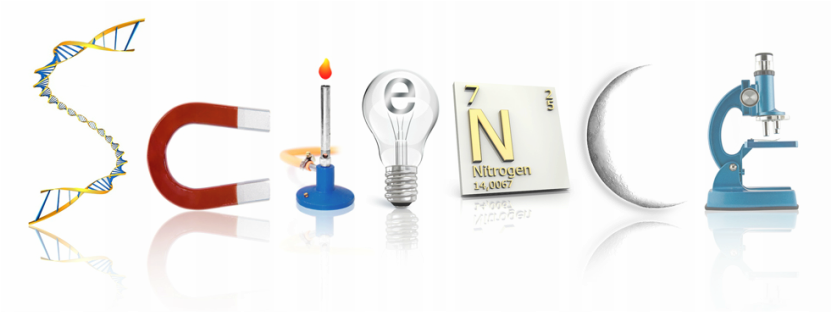
- BUILD CANISTER ROCKET
- One empty 35mm plastic film canister and lid. These are getting harder to find, but stores that develop film should have some. (The white canisters work much better than the black ones do.) If you have trouble finding canisters, you can get them HERE.
- One fizzing antacid tablet (such as Alka-Seltzer - Get this from your parents)
- Water
- Safety goggles
2. Break the antacid tablet in half.
3. Remove the lid from the film canister and put a teaspoon (5 ml) of water into the canister.
Do the next 2 steps quickly
4. Drop the tablet half into the canister and snap the cap onto the canister (make sure that it snaps on tightly.)
5. Quickly put the canister on the ground CAP SIDE DOWN and STEP BACK at least 2 meters.
6. About 10 seconds later, you will hear a POP! and the film canister will launch into the air!
Caution: If it does not launch, wait at least 30 second before examining the canister. Usually the cap is not on tight enough and the build up of gas leaked out.
There's nothing like a little rocket science to add some excitement to the day. When you add the water it starts to dissolve the alka-seltzer tablet. This creates a gas call carbon dioxide. As the carbon dioxide is being released, it creates pressure inside the film canister. The more gas that is made, the more pressure builds up until the cap it blasted down and the rocket is blasted up. This system of thrust is how a real rocket works whether it is in outer space or here in the earth's atmosphere. Of course, real rockets use rocket fuel. You can experiment controlling the rocket's path by adding fins and a nose cone that you can make out of paper. If you like this experiment, try the Exploding Lunch Bag. Be safe and have fun!
The project above is a DEMONSTRATION. To make it a true experiment, you can try to answer these questions:
1. Does water temperature affect how fast the rocket launches?
2. Does the size of the tablet piece affect how long it takes for the rocket to launch?
3. Can the flight path be controlled by adding fins or a nosecone to the canister?
4. How much water in the canister will give the highest flight?
5. How much water will give the quickest launch?
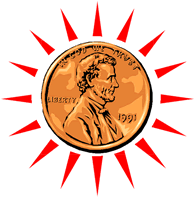
* A few old (not shiny) pennies
* 1/4 cup white vinegar
* 1 teaspoon salt
* Non-metal bowl
* Paper towels
There is some pretty fancy chemistry going on in that little bowl of yours. It turns out that vinegar is an acid, and the acid in the vinegar reacts with the salt to remove what chemists call copper oxide which was making your pennies dull. You're not done yet, though, lets try another experiment:
Add more pennies to the bowl for 10 seconds, but this time , don't rinse them off. Place them on a paper towel to dry off. In time the pennies will turn greenish-blue as a chemical called malachite forms on your pennies. But wait, you're still not done yet.
Place one or two nuts and bolts in the vinegar and watch - they may become COPPER in color! The vinegar removed some of the copper from the pennies, if there is enough copper in the vinegar, the copper will become attracted by to the metal in the nuts and bolts and they will take on a new copper color - cool.
The project above is a DEMONSTRATION. To make it a true experiment, you can try to answer these questions:
1. Will other acids (like lemon juice or orange juice) work as well?
2. Does this cleaning chemistry work on other coins?
3. Do other amounts of salt make a difference in the chemistry of the experiment?
* 1/4 cup white vinegar
* 1 teaspoon salt
* Non-metal bowl
* Paper towels
- Pour the vinegar into the bowl and add the salt - stir it up.
- Put about 5 pennies into the bowl and count to 10 slowly.
- Take out the pennies and rinse them out in some water. Admire their shininess!
There is some pretty fancy chemistry going on in that little bowl of yours. It turns out that vinegar is an acid, and the acid in the vinegar reacts with the salt to remove what chemists call copper oxide which was making your pennies dull. You're not done yet, though, lets try another experiment:
Add more pennies to the bowl for 10 seconds, but this time , don't rinse them off. Place them on a paper towel to dry off. In time the pennies will turn greenish-blue as a chemical called malachite forms on your pennies. But wait, you're still not done yet.
Place one or two nuts and bolts in the vinegar and watch - they may become COPPER in color! The vinegar removed some of the copper from the pennies, if there is enough copper in the vinegar, the copper will become attracted by to the metal in the nuts and bolts and they will take on a new copper color - cool.
The project above is a DEMONSTRATION. To make it a true experiment, you can try to answer these questions:
1. Will other acids (like lemon juice or orange juice) work as well?
2. Does this cleaning chemistry work on other coins?
3. Do other amounts of salt make a difference in the chemistry of the experiment?
Make Plastic Milk
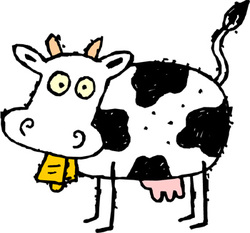
- One cup of milk
- 4 teaspoons of white vinegar
- A bowl
- A strainer
- Adult help
- Ask your friendly adult to heat up the milk until it is hot, but not boiling
- Now ask the adult to carefully pour the milk into the bowl
- Add the vinegar to the milk and stir it up with a spoon for about a minute
- Now the fun part, pour the milk through the strainer into the sink - careful it may be hot!
- Left behind in the strainer is a mass of lumpy blobs.
- When it is cool enough, you can rinse the blobs off in water while you press them together .
- Now just mold it into a shape and it will harden in a few days. - Cool!
Plastic? In milk? Well, sort of. You made a substance called CASEIN. It's from the latin word meaning "cheese." CasEin occurs when the protien in the milk meets the acid in the vinegar. The casein in milk does not mix with the acid and so it forms blobs. True plastics, called poymers, are a little different. If you want to make a true plastic and learn more about polymers, try the Homemade Slime experiment. Have fun!
The project above is a DEMONSTRATION. To make it a true experiment, you can try to answer these questions:
1. Will more vinegar make more casein?
2. Will you get the same results with low-fat milk, soy milk?
3. Do all types of vinegar work?
4. Will other acids, such as lemon juice and orange juice work?
Make Lava In Cup
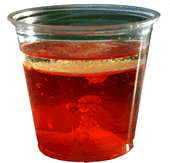
* A clear drinking glass
* 1/4 cup vegetable oil
* 1 teaspoon salt
* Water
* Food coloring (optional)
So what's going on? Of course, it's not real lava but it does look a bit like a lava lamp your parents may have had. First of all, the oil floats on top of the water because it is lighter than the water. Since the salt is heavier than oil, it sinks down into the water and takes some oil with it, but then the salt dissolves and back up goes the oil! Pretty cool huh?
The project above is a DEMONSTRATION. To make it a true experiment, you can try to answer these questions:
1. How long will the effect go on if you keep adding salt?
2. Do different kinds of food oil give different effects?
3. Will other substances (sand, sugar. etc.) work the same as salt?
4. Does the height or shape of the glass affect the experiment?
* 1/4 cup vegetable oil
* 1 teaspoon salt
* Water
* Food coloring (optional)
- Fill the glass about 3/4 full of water .
- Add about 5 drops of food coloring - I like red for the lava look.
- Slowly pour the vegetable oil into the glass. See how the oil floats on top - cool huh? It gets better.
- Now the fun part: Sprinkle the salt on top of the oil.
- Watch blobs of lava move up and down in your glass!
- If you liked that, add another teaspoon of salt to keep the effect going.
So what's going on? Of course, it's not real lava but it does look a bit like a lava lamp your parents may have had. First of all, the oil floats on top of the water because it is lighter than the water. Since the salt is heavier than oil, it sinks down into the water and takes some oil with it, but then the salt dissolves and back up goes the oil! Pretty cool huh?
The project above is a DEMONSTRATION. To make it a true experiment, you can try to answer these questions:
1. How long will the effect go on if you keep adding salt?
2. Do different kinds of food oil give different effects?
3. Will other substances (sand, sugar. etc.) work the same as salt?
4. Does the height or shape of the glass affect the experiment?
Rubber Chicken Bone
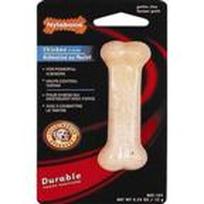
- A jar large enough to fit a chicken bone
- A chicken bone - a leg or "drumstick" bone works best
- Vinegar
- 1. Have a nice chicken dinner and save a bone. Leg bones work best.
2. Rinse off the bone in running water to remove any meat from the bone.
3. Notice how hard the bone is - gently try bending it. Like our bones, chicken bones have a mineral called calcium in them to make them hard.
4.Put the bone into the jar and cover the bone with vinegar. It might be a good idea to put the lid on the jar or cover it - let it sit for 3 days
5. After 3 days remove the bone. It should feel different. Now can rinse it off and try bending it again. Is it really a rubber bone?
So what happened? What is so special about vinegar that it can make a hard bone squishy? Vinegar is considered a mild acid, but it is strong enough to dissolve away the calcium in the bone. Once the calcium is dissolved, there is nothing to keep the bone hard - all that is left is the soft bone tissue. Now you know why your mom is always trying to get you to drink milk - the calcium in milk goes to our bones to make our bones stronger. With some effort and you can really get the bone to bend.
The project above is a DEMONSTRATION. To make it a true experiment, you can try to answer these questions:
1. Does the length of time the bone is in vinegar affect how much the bone bends?
2. Do smaller size bones become "bendy" sooner?
3. Do different types of vinegar affect how bendy bones become ?
Colors Brust In The Milk Tray
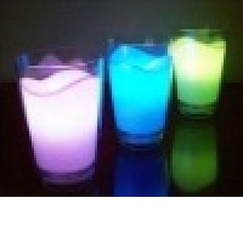
- A flat tray (like a cookie baking tray)
- Food coloring (at least 3 different colors)
- Whole milk - low fat milk will not work for this experiment
- Liquid soap used for washing dishes
- Carefully pour the milk into the tray so that it just covers the bottom
- Add about 6-8 drops of different colored food coloring onto the milk in different spots
- Add about 5 drops of the liquid soap onto the drops of food coloring and watch the show!
- To clean up, simply pour the colored milk down the drain. (don't drink it!)
So you know where the color comes from, but why milk and liquid soap? The main job of dish soap it to go after fat and break it down. Usually the fat is on dishes from the food we eat, but fat is also in whole milk. When you drop the liquid soap onto the tray, it tried to break down the fat in the milk. While it was doing that, it caused the colors to scatter and mix creating a very colorful display. Have fun!
The project above is a DEMONSTRATION. To make it a true experiment, you can try to answer these questions:
1. What liquid dish soap works the best?
2. Does the shape of the tray affect the reaction?
Special Lunch Bag
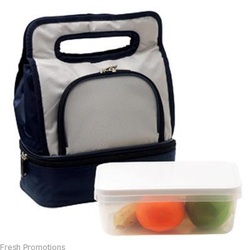
- One small (sandwich size) zip-lock bag - freezer bags work best.
- Baking soda
- Warm water
- Vinegar
- Measuring cup
- A tissue
- 1. Go outside - or at least do this in the kitchen sink.
2. Put 1/4 cup of pretty warm water into the bag.
3. Add 1/2 cup of vinegar to the water in the bag.
3. Put 3 teaspoons of baking soda into the middle of the tissue
4. Wrap the the baking soda up in the tissue by folding the tissue around it.
5. You will have to work fast now - partially zip the bag closed but leave enough space to add the baking soda packet. Put the tissue with the baking soda into the bag and quickly zip the bagcompletely closed.
6. Put the bag in the sink or down on the ground (outside) and step back. The bag will start to expand, and expand, and if all goes well...POP!
Cool huh? Nothing like a little chemistry to to add fun to a boring afternoon. What happens inside the bag is actually pretty interesting - the baking soda and the vinegar eventually mix (the tissue buys you some time to zip the bag shut) When they do mix, you create an ACID-BASE reaction and the two chemicals work together to create a gas, (carbon dioxide - the stuff we breathe out) well it turns out gasses need a lot of room and the carbon dioxide starts to fill the bag, and keeps filling the bag until the bag can no longer hold it any more and, POP! Be sure to clean up well and recycle those plastic bags...have fun!
The project above is a DEMONSTRATION. To make it a true experiment, you can try to answer these questions:
1. Will different temperature water affect how fast the bag inflates?
2. What amount of baking soda creates the best reaction?
3. Which size bag creates the fastest pop?
Electricity Through Potato
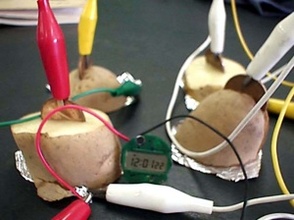
Everyone can get ahold of a few potatoes, and what better way to use them (aside from consumption, that is) than to make them into an operating clock? It’s easy and only requires the use of a few things many people have handy, or, if you need to go to the electronics store to purchase an LED clock anyway, you can get the alligator clips and electrodes there, as well.
To run it on two potatoes, you’ll need:
1. Two copper electrodes. A 10-cm length of thick (0.64 cm) copper ground wire
works well. You’ll find it at hardware and home supply stores.
2. Two zinc electrodes. Use large galvanized nails, also available from a hardware or home supply store.
3. Three alligator-clip wires
4. Two potatoes.
Now make a potato clock. Open the battery compartment of the clock and remove the button battery. In the compartment, notice that there are two connections
for the battery marked plus (+) and minus (-). You’ll connect the potato battery to these two places. Let’s call the potatoes A and B. Connect A and B to the clock like this:
1. Insert a copper electrode and a zinc electrode into each potato, fairly far apart.
2. Use an alligator-clip wire to connect the copper electrode of potato A to the plus (+) connection in the clock.
3. Use an alligator-clip wire to connect the zinc electrode of potato B to the negative (-) connection in the clock.
4. Use an alligator-clip wire to connect the zinc electrode of potato A to the copper electrode of potato B.
Viola! This clock will last for months especially if the potatoes are very fresh.
To run it on two potatoes, you’ll need:
1. Two copper electrodes. A 10-cm length of thick (0.64 cm) copper ground wire
works well. You’ll find it at hardware and home supply stores.
2. Two zinc electrodes. Use large galvanized nails, also available from a hardware or home supply store.
3. Three alligator-clip wires
4. Two potatoes.
Now make a potato clock. Open the battery compartment of the clock and remove the button battery. In the compartment, notice that there are two connections
for the battery marked plus (+) and minus (-). You’ll connect the potato battery to these two places. Let’s call the potatoes A and B. Connect A and B to the clock like this:
1. Insert a copper electrode and a zinc electrode into each potato, fairly far apart.
2. Use an alligator-clip wire to connect the copper electrode of potato A to the plus (+) connection in the clock.
3. Use an alligator-clip wire to connect the zinc electrode of potato B to the negative (-) connection in the clock.
4. Use an alligator-clip wire to connect the zinc electrode of potato A to the copper electrode of potato B.
Viola! This clock will last for months especially if the potatoes are very fresh.
Rainbow In Glass
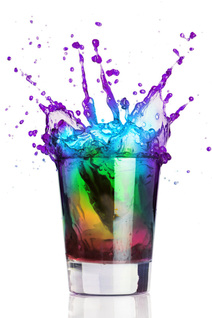
Try this at home: Have you ever seen the separate viscosities of liquids displayed like a fluid rainbow? Well, here is a simple way to take several household items and wow your friends and family alike with a beautiful use of such common materials! Remember to add each very slowly and to tint each clear liquid with some food coloring.
You will need the following materials:
1/4 cup (60 ml) dark corn syrup or honey
1/4 cup (60 ml) dishwashing liquid
1.4 cup (60 ml) water
1/4 cup (60 ml) vegetable oil
1/4 cup (60 ml) rubbing alcohol
a tall 12 ounce (350 ml) glass or clear plastic cup
two other cups for mixing
food coloring
You will need the following materials:
1/4 cup (60 ml) dark corn syrup or honey
1/4 cup (60 ml) dishwashing liquid
1.4 cup (60 ml) water
1/4 cup (60 ml) vegetable oil
1/4 cup (60 ml) rubbing alcohol
a tall 12 ounce (350 ml) glass or clear plastic cup
two other cups for mixing
food coloring
PROVE 1 = 2 AND 2 =3
Cabbage Chemistry
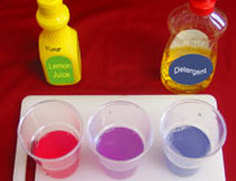
To do this activity you will need:
Substances that are acidic or basic make the eyes sting, so baby shampoo is made neutral.
Acids
Acids are a very common group of chemical compounds, many of which occur naturally. Acids can be strong or weak.
Citric acid, which occurs naturally in lemons, is a weak acid. Hydrochloric acid (used for soldering) and sulfuric acid (battery acid) are very strong acids.
Bases
Bases (often called alkalis) are another group of chemical compounds that have different chemical properties from acids. When bases and acids are added together, they will neutralise each other's properties.
We describe whether things are acidic, basic or neutral by using a scale called the pH scale. The pH scale ranges from zero to 14. A substance with a pH of:
Acids and bases can be detected by a group of chemical compounds called acid-base indicators. One of the first known naturally occurring indicators was a type of lichen called litmus. (Lichens are plant-like growths that are often found on rocks and tree bark.) Litmus turns red in the presence of an acid or blue with a base.
Most indicators used today to detect acids and bases are man-made. However, many plant pigments, such as the red cabbage you used, contain chemicals that act as acid-base indicators.
fresh red cabbage
a sharp knife
a cutting board
hot tap water
seven clear plastic disposable cups
seven plastic spoons
a large plastic bottle
a range of the household substances which may include:
strongly acidic. For example, powdered toilet cleaner.
acidic. For example, vinegar, lemon juice, white wine, lemonade or citric acid.
weakly acidic. For example, cream of tartar.
neutral. For example, pure water, shampoo or baby shampoo.
slightly basic. For example, bicarbonate of soda.
basic. For example, milk of magnesia, washing soda or floor cleaner.
strongly basic. For example, dishwasher liquid or powder.
Using a sharp knife and cutting board, finely slice three or four red cabbage leaves.
Place the cabbage leaves in the plastic bottle, half fill the bottle with hot water and screw the lid on tightly.
Shake the bottle for a few minutes until the water becomes a deep purple colour. Leave the solution to cool.
Strain the solution and add sufficient water to the solution to make about one litre.
In each of the cups, place a small amount of one of the above household substances in the following order: strongly acidic; acidic; slightly acidic; neutral; slightly basic; basic and strongly basic.
Now half fill each cup with the red cabbage water and stir the solution. If arranged in order, the jars should display a spectrum of colours from cherry red (strongly acidic), pink-red (acidic), lilac (slightly acidic), purple (neutral), blue (slightly basic), green (basic) and yellow (strongly basic).
Substances that are acidic or basic make the eyes sting, so baby shampoo is made neutral.
Acids
Acids are a very common group of chemical compounds, many of which occur naturally. Acids can be strong or weak.
Citric acid, which occurs naturally in lemons, is a weak acid. Hydrochloric acid (used for soldering) and sulfuric acid (battery acid) are very strong acids.
Bases
Bases (often called alkalis) are another group of chemical compounds that have different chemical properties from acids. When bases and acids are added together, they will neutralise each other's properties.
We describe whether things are acidic, basic or neutral by using a scale called the pH scale. The pH scale ranges from zero to 14. A substance with a pH of:
0 is a very strong acid
3 - 5 is a weak acid
7 is neutral
8 - 9 is a weak base
13 - 14 is a very strong base.
Acids and bases can be detected by a group of chemical compounds called acid-base indicators. One of the first known naturally occurring indicators was a type of lichen called litmus. (Lichens are plant-like growths that are often found on rocks and tree bark.) Litmus turns red in the presence of an acid or blue with a base.
Most indicators used today to detect acids and bases are man-made. However, many plant pigments, such as the red cabbage you used, contain chemicals that act as acid-base indicators.
